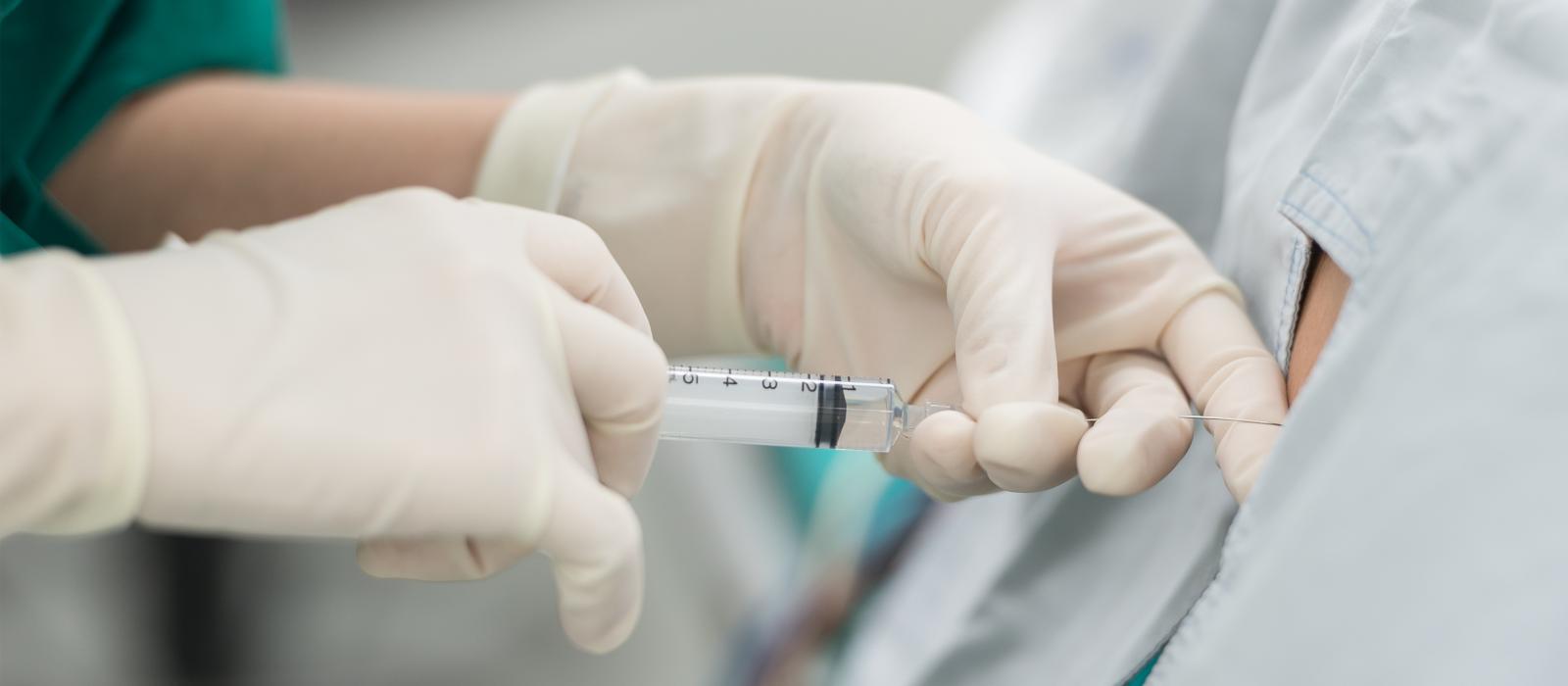Introduction
Steroid injections (also referred to as 'corticosteroid injections') can help to reduce inflammation in the body, which results in a reduction in the pain caused by that inflammation. A reduction in pain levels and increased function and mobility can also allow other therapies such as physiotherapy to help a person's longer-term recovery.
Steroids are produced naturally in the body in the adrenal glands and the corticosteroids used in these injections (as distinct from 'anabolic steroids' which are quite different) are synthetic versions of natural steroids. Hydrocortisone, methylprednisolone and triamcinolone are common types of corticosteroids.
There are different types of steroid injection. These are…
- Epidural – into the spine column.
- Intramuscular – into muscle tissue.
- Intra-articular – into a joint.
Indications
Steroid injections may be recommended for the following conditions…
- Autoimmune conditions (e.g. rheumatoid arthritis, multiple sclerosis, inflammatory bowel disease, allergies).
- Osteoarthritis.
- Gout.
- Lumbar radicular pain.
- Bursitis.
- Tendinitis.
- Shoulder pain.
- Carpal tunnel syndrome.
- Sacroiliac joint pain.
Although steroid injections can be very effective for some people, there are some situations where they are generally not recommended. These guidelines include if…
- You have had an allergic reaction to steroids in the past.
- You currently have an infection (including minor infection e.g. eye infection).
- You have recently been vaccinated (or are planning to be).
- You are pregnant or breastfeeding or trying to conceive.
- You have certain other medical conditions, e.g. liver / heart / kidney problems, diabetes, epilepsy or hypertension (high blood pressure).
There are also limits on the number of steroid injections you should take in a certain period of time, with the current recommendation being that you should not have more than three steroid injections (to the same injection site) in a year. You also should not have a steroid injection within 4-6 weeks of another.
These are guidelines only and you should consult with your doctor to determine whether or not you should go ahead if any of these apply to you.
Preoperative Instructions
You may need to temporarily stop taking some medications ahead of the steroid injection. We can advise you before the injection whether this is necessary in your case.
Procedure
A steroid injection procedure is very straightforward. They are often performed under either ultrasound or X-ray guidance, to make sure that the injection targets the correct area.
Where the injection is to control pain, it contains the steroid along with a small amount of anaesthetic, which will result in almost immediate pain relief, although this wears off fairly soon.
The effect of the steroid takes a little longer to take effect, generally within a few days. Once it does take effect, a steroid injection generally offers pain relief for 6-8 weeks, and in some cases longer, particularly when combined with other treatments (e.g. physical therapy).
Postoperative Instructions
There are very few specific post-op instructions after this procedure.
It is normal to have some pain at the injection site for 1-2 days. This can be relieved with a cold pack for 10 minutes at a time, or by taking over the counter pain medication.
Risks
A steroid injection is a very low risk procedure – however all medical treatment comes with some level of risk. Possible complications may include…
For epidural / intramuscular / intra-articular injections…
- Bruising at the injection site (temporary) .
- Flushes to the face for a few hours after the injection.
- Loss of body fat or paler skin at injection site (in rare cases permanent).
- Increase in blood sugar levels in diabetics (temporary, i.e. for a few days).
- Increase in blood pressure in people with hypertension (temporary, i.e. for a few days).
- Mood swings.
Steroid Injection treatments
Speak to our doctors to learn more about the various Steroid Injection treatments offered by Melbourne Pain Group, including:
- Caudal Epidural Steroid Injection.
- Cervical Epidural Steroid Injection.
- Facet Joint Steroid Injection.
- Lumbar Epidural Steroid Injection.
- Lumbar Transforaminal Epidural Steroid Injection.
- Sacro-iliac Joint Steroid Injection.
- Thoracic Epidural Steroid Injection.
- Transforaminal Epidural Steroid Injection.
- Translaminar Epidural Steroid Injection.
